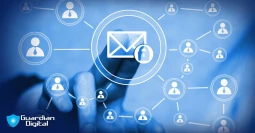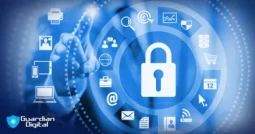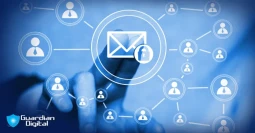How Do I Detect and Respond to a Compromised Email Account?

We often take email security for granted until something goes wrong. A compromised email account isn’t just an inconvenience; it’s an open gateway for cybercriminals to chow down on all of your sensitive information, access your account or spread malware while impersonating you.
The first step is to see the warning signs. An unexpected flood of requests to reset passwords, attempted logins from strange places, mysteriously absent messages, or friends telling you they just got a weird email from you are all red flags. In some cases, users receive alarming messages like a Microsoft account security alert email or suspicious notifications from services like PayPal or Norton—these can either be genuine or fake, so using a scam email checker can help verify their authenticity.
Your Email Was Hacked—Here’s what to do Now
When your email is compromised, every second counts. Hackers don’t just lock you out—they exploit your account for fraud, identity theft, and access to other sensitive accounts. Follow these steps immediately to take back control and protect yourself from further damage.
Secure Your Account Before the Hacker Does
Try to log in right away. If you still have access, change your password immediately to something strong and unique. If you're locked out, act fast. Go to your email provider’s account recovery page—services like Gmail will walk you through the Gmail recovery email process. Hackers often change recovery details quickly, so don’t delay.
Pro Tip: If your recovery options have been altered, check your phone and secondary email for messages about recent changes—you might still be able to revert them.
Cut Off the Hacker’s Access
Once you’re back in, eliminate any lingering threats. Check active sessions. Look for unknown devices or locations in your account’s login history and sign them out. Remove unauthorized email forwarding rules. Hackers often set up auto-forwarding to keep spying on your messages even after you’ve regained control. Reset recovery options. Make sure your backup email and phone number are correct and belong to you.
Pro Tip: In Gmail, head to Security > App Passwords and revoke any access that looks unfamiliar. While you're tightening things up, consider learning how to send secure email in Gmail or how to send a secure email in Outlook—these habits strengthen your defenses going forward.
Scan for Malware Before It Happens Again
If hackers got in despite a strong password, your device might be infected with malware or a keylogger. Before logging back into other accounts, run a deep antivirus scan. Pay extra attention to suspicious browser extensions or applications. Tools like Norton or McAfee might even alert you to threats—just be cautious of Norton Lifeflock scam emails, McAfee scam emails, or Lifelock scam emails, which are common phishing attempts posing as legitimate antivirus warnings.
Pro Tip: Avoid using the compromised device to reset passwords until you confirm it’s clean. If possible, use another device for recovery.
Prevent Future Hacks with Proactive Security
To ensure this never happens again, enable multi-factor authentication (preferably with an app, not SMS) to make unauthorized logins significantly harder. You should also use email aliases for different platforms to isolate risk, and regularly audit third-party apps connected to your email to remove anything suspicious or unnecessary. It's important to learn the recommended methods to protect yourself from identity theft and fraud, which include using password managers, setting up fraud monitoring tools, and adopting strong behavioral security habits. Consider investing in hardware-based security like YubiKey—this adds a physical layer to your login process and greatly reduces the chance of account compromise.
If your email was part of a broader breach—like your Social Security account being accessed or changed—be aware that you may need to go a step further. Some users ask things like how do I check my Social Security account, or schedule a Social Security appointment online to monitor account activity or handle a Social Security name change online due to identity theft.
Final Thoughts: Speed and Awareness Are Your Best Defense
Recovery from an email hack isn’t just about resetting passwords—its about cutting off the hacker’s access, ensuring your system is clean, and reinforcing your security so it never happens again. The faster you act, the less damage they can do.
If your account was compromised, take these steps now. And if you’ve never been hacked, use this as a wake-up call to lock down your security before it happens to you.
Most people have their email accounts as a central hub for online activity—banking, social media, cloud storage, and even work-related accounts are often linked to a single email address. If hackers get into your email, they can use it to commandeer all those linked accounts, escalating the breach far beyond just email communication. We recommend a strict regimen of account monitoring and password changing (with a password manager, if necessary) to ensure you regain control if any of the linked accounts are breached.
A major role in maintaining security also depends on education. Cybercriminals often exploit vulnerable consumers because people aren't properly educated. Staying informed about common attack methods, recognizing suspicious emails, and avoiding clicking on unverified links can go a long way in preventing account takeovers. Businesses, in particular, should provide ongoing cybersecurity training for employees, as compromised work emails can lead to larger data breaches, financial losses, and reputational damage.
Ensuring the security of emails must be a continual effort and not a one-time job. Once email protection is set up, it is all too easy to simply relax and trust in the layer of security that has just been implemented. But the threats to the system are always changing. This makes it crucial to remain vigilant and consistently active, practically requiring a 24/7 effort, as email is central to so many systems.
Other FAQs
- What Is Guardian Digital EnGarde Cloud Email Security?
- FAQs: What Are Some Examples of Malicious Code?
- How to Properly Scan Your Windows Computer for Malware & Remove Malware from Your PC
- FAQs: What Are Denial of Service (DoS) Attacks?
- FAQs: Why Outsource Businesses Email Security?
- What Is Domain Spoofing?
- What Are Insider Threats & How Can You Reduce Your Risk?
- The Silent Assassins: How Impersonation Attacks Target CEOs via Email
- How Can I Choose the Right Email Security Service for My Organization?
- What Are the Benefits of Managed Security Services Providers (MSSPs)?



